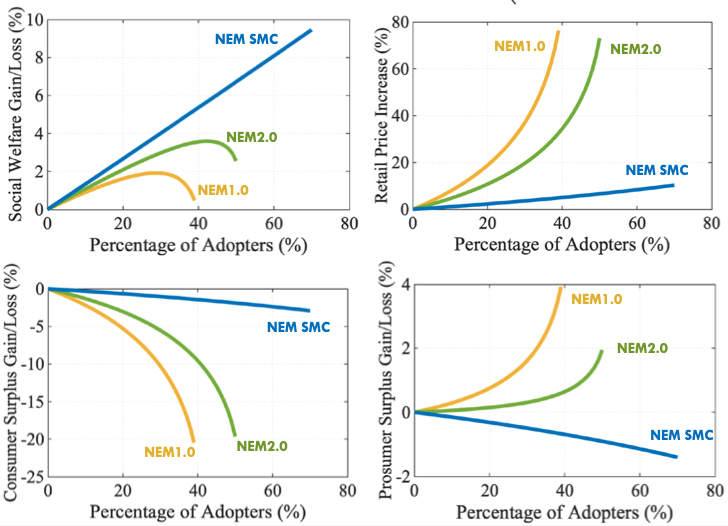Our work entitled “ On Net Energy Metering X: Optimal Prosumer
Decisions, Social Welfare, and Cross-subsidies“ was presented at PSERC (Presentation, ArXiv).
The presentation was well attended with over 210 attendees!
An abstract of the work is given below:
We introduce NEM X, an inclusive retail tariff model that captures features of existing net energy metering (NEM) policies. It is shown that the optimal prosumer decision has three modes: (a) the net-consuming mode where the prosumer consumes more than its behind-the-meter distributed energy resource (DER) production when the DER production is below a predetermined lower threshold, (b) the net-producing mode where the prosumer consumes less than its DER production when the DER production is above a predetermined upper threshold, and (c) the net-zero energy mode where the prosumer's consumption matches to its DER generation when its DER production is between the lower and upper thresholds. Both thresholds are obtained in closed-form. Next, we analyze the regulator's rate-setting process that determines NEM X parameters such as retail/sell rates, fixed charges, and price differentials in ToU tariffs' on and off-peak periods. A stochastic Ramsey pricing program is formulated that maximizes social welfare subject to the revenue break-even constraint for the regulated utility. Performance of NEM X policies is evaluated using real and synthetic data to illuminate impacts of NEM policy designs on social welfare, cross-subsidies of prosumers by consumers, and payback time of DER investments that affect long-run DER adoptions.




